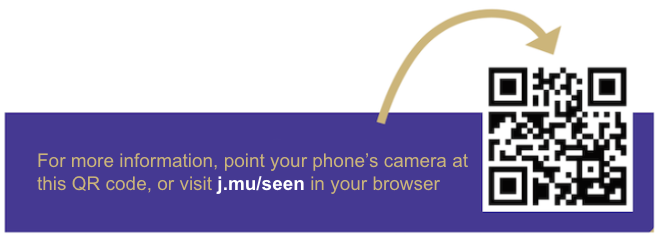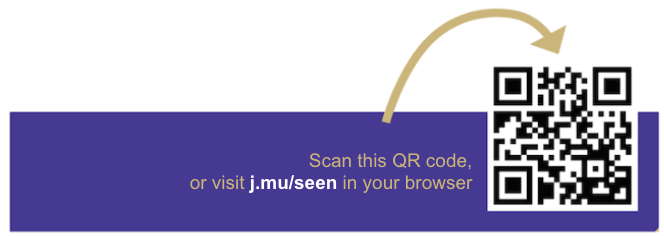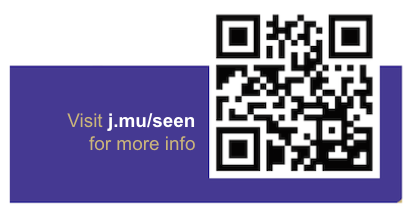Paper guidelines
The preferred paper for most marketing materials is uncoated smooth paper to assist in providing an authentic and approachable feel. Sometimes a coated sheet may still be more appropriate. In that case, matte- or dull-coated is preferred. Avoid high gloss.
30% Post-Consumer Waste (PCW) content is advised by procurement policy.
The JMU Publications Signature shall appear on all print communications. It consists of the stacked logo without the block JMU, university unit name, return address contact information and the year of the publication.
Please use this example as a reference:

Letterhead
Letterhead is offered by JMU Print Services
QR codes
QR codes, if used in conjunction with a short URL are used to measure engagement in print pieces. Here is a sample of different QR code treatments with explanations for each one. The components of a QR code treatment are:
- The QR code
- The short URL ("j.mu/seen" in the examples. Highlighting the URL is recommended.)
- Directions (the older the audience, the more explicit the directions need to be)
- An arrow pointing from the short URL to the QR code. This subliminally encourages the reader to try the QR code, and it also makes it very clear that they are associated.
j.mu short URLs are intended for use with external audiences only! If your piece is for an internal document (current students, faculty/staff), please use another short URL creation service like bitly or tinyurl.
If doing a j.mu short URL, you will get a "-qr" version of the short URL automatically. The "-qr" version of the short URL should be used to create the QR code. When a j.mu short URL was requested, you should have received an email with directions on how to create a QR code. Please use that email as a reference.
The "-qr" suffixed short URL (like j.mu/seen-qr) is where the QR code will point, and the non-suffixed version (like j.mu/seen) will be what you display in the printed link. The distinction can be used to help track how many people use the QR codes. To make sure the generated QR code is pointing to the correct short URL, use https://blog.qr4.nl/Online-QR-Code-Decoder.aspx
Please verify that the QR code is going to the "-qr" version of the short URL, and please test your QR code on an actual-sized color print-out with your own phone before sending the piece to the printer.
Here are examples, in order of most verbose (less tech-savvy audiences) to least verbose (more tech-savvy audiences):



